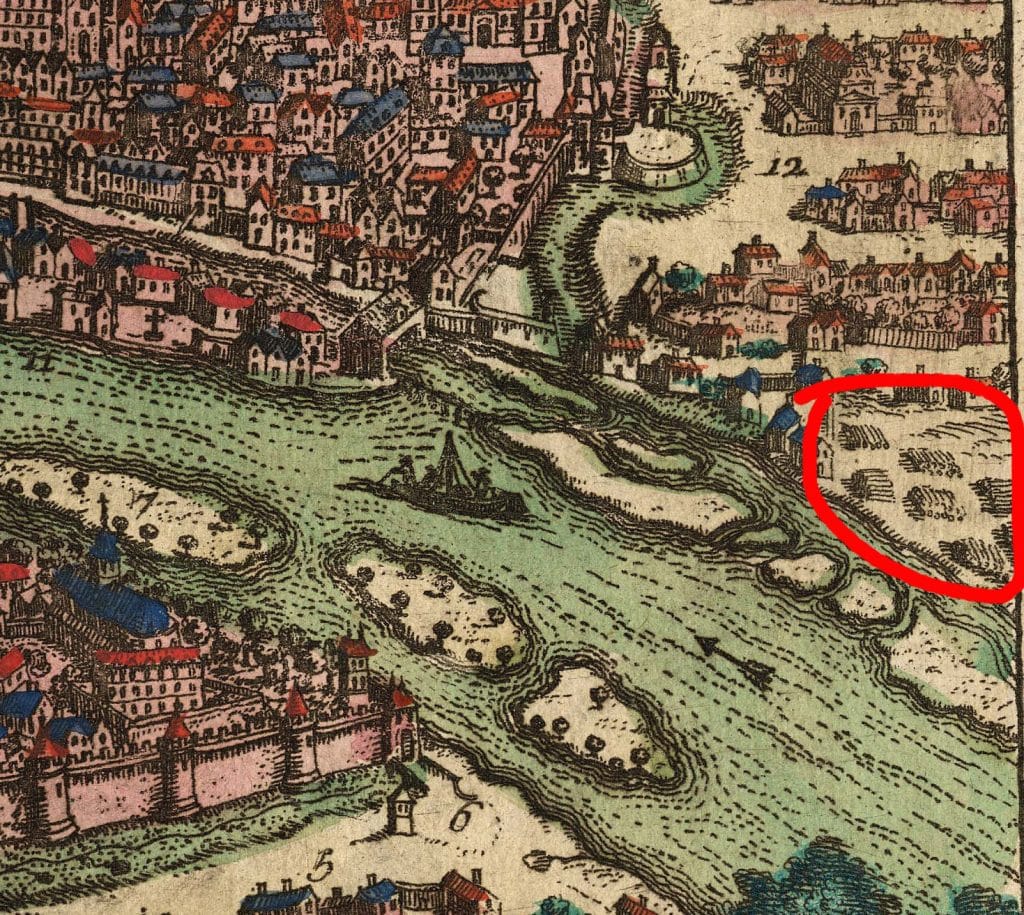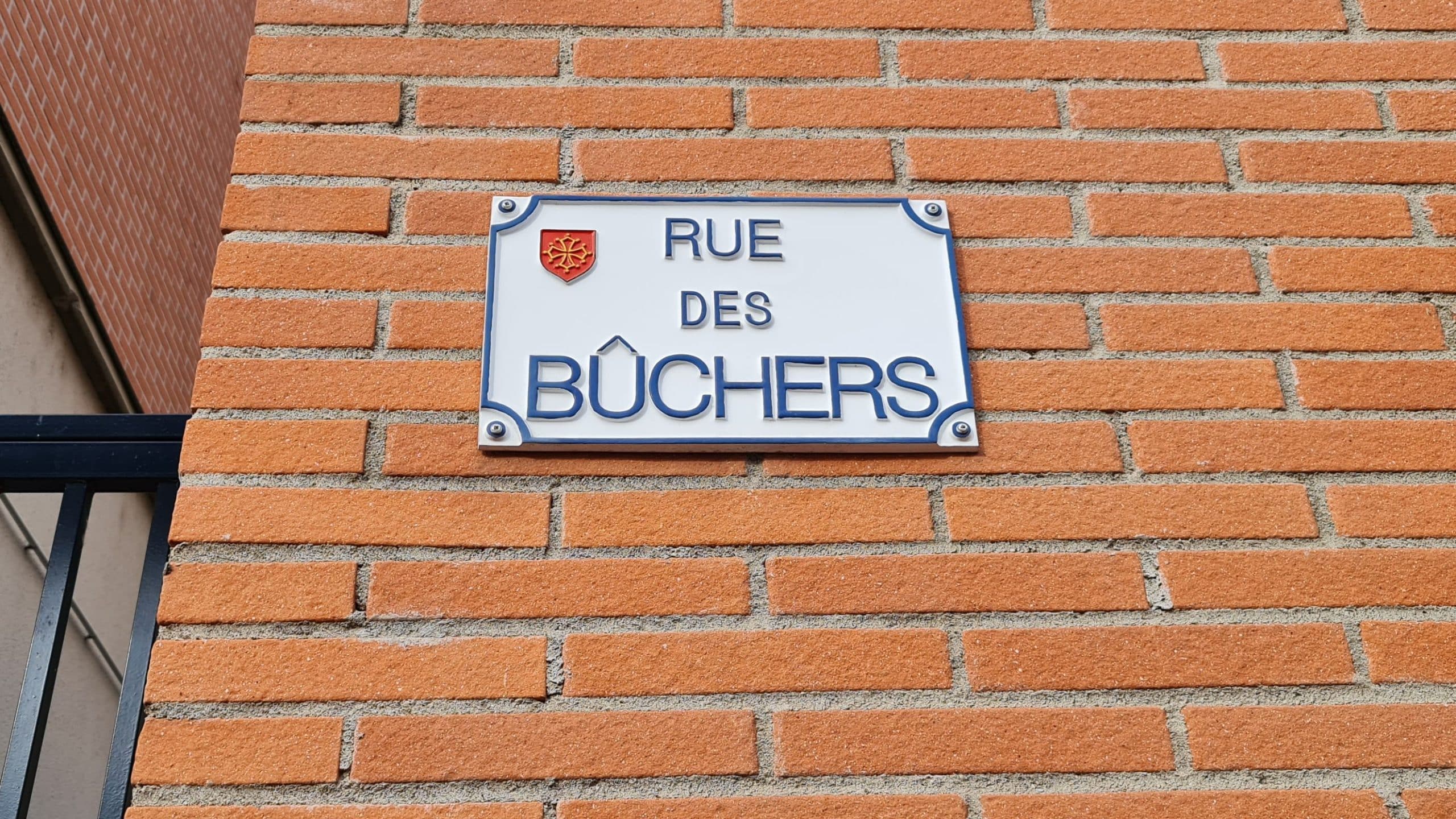By hanging, quartering, decapitation or immolation, executions in public places were de rigueur in the time of the Capitouls. From the Middle Ages to 1789, the latter, city magistrates, condemned criminals who had committed serious acts to this tragic end. Specific places in Toulouse were even dedicated to it, but is this really the case of rue des Bûchers, as logic would have it?
In Toulouse, the last execution took place on January 13, 1948, in the courtyard of the Castelet of the Saint-Michel prison. Two death row inmates were guillotined. But at the time of the Capitouls, magistrates who ruled the city from the Middle Ages to the French Revolution, this sentence was regularly inflicted on criminals. At different places in the city, depending on the period, scaffolds and pillories were scattered to execute and expose the condemned. For this, several methods: decollation (cut off head), reserved for the nobility, hanging, or the stake, traditionally intended for the perpetrators of infanticide, in the case of witchcraft, heretics, and of which the Protestant Jean Calas was a victim. in 1762 after being wheeled.
But where did the Toulouse executions take place?
Whether it was a guillotine, a gallows or a pile of firewood, the execution devices were all arranged in the same place. “In Toulouse, it must have been Rue des Bûchers of course! » deduced Estelle, sure of herself. But this art history student at the Jean-Jaurès University in Toulouse, with an implacable toponymic logic, is on the wrong track. In effect, contrary to what the name of this street might suggest, no execution would have taken place there. Thus, no one was burned, or more generally executed, rue des Bûchers.
Those sentenced to death were actually taken to Place Arnaud-Bernard, or more regularly Place du Salin.there to suffer their punishment, according to the City Municipal Archives. This site was chosen for its proximity to the Parliament of Toulouse, located in place of the current courthouse. His judgments were added to the capitular sentences from 1443. Then, from the 16th century, the favored site for capital executions was moved to Place Saint-Georges, so that the judges no longer cross the last glance of those they had condemned, as specified in a work entitled “Memoirs of the Imperial Academy of Sciences, Inscriptions and Belles-Lettres de Toulouse” (Volume VI), and in which Victor Molinier, professor at the Faculty of Law, reads a historical note on the sinister forks (place of exposure of the remains) of the city of Toulouse. In it, he evokes the testimony of Bernard de La Roche-Flavin, one of the magistrates of the Parliament of Toulouse: “On October 15, 1523, the scaffold and pillory to be executed to death was at the place du Salin de Toulouse , which was knocked down and transferred to the Place Saint-Georges, to, in its place, erect and bring a fountain, which was not done: but the main occasion was so that the lords of the Court, entering and leaving the palace, do not aim for the execution of those they had condemned on the same day”.
From bonfires to bonfires

Thus, in Toulouse, rue des Bûchers, formerly rue de la Ruque, would not have been so named for having been the scene of multiple killings. But what does this designation, which dates back to the 18th century, according to the Municipal Archives of Toulouse, owe to? According to city librarians, the current rue des Bûchers takes its name from the wood of pagelle (firewood) or to build (work) brought by rafts or by floating on the Garonne, at Port-Garaud (between the quays of Tounis and the Saint-Michel bridge, editor’s note)”. Once the timber cargoes were unloaded, they were measured and then delivered to the four corners of Toulouse. And to store wood, awaiting delivery, merchants erect “pyres” (tidy pile of wood), watched by guards. The carters returned tirelessly to the pyres to load the wood and honor the orders. And it is in particular by the rue des bûchers that they set out again towards the city.
On the other hand, History does not say if the wood which arrived in Toulouse by Port-Garaud was used, or not, to feed the stakes of the condemned…
We would like to say thanks to the writer of this article for this awesome material
Toulouse: Who was executed rue des Bûchers?
Find here our social media accounts as well as other pages that are related to them.https://nimblespirit.com/related-pages/

